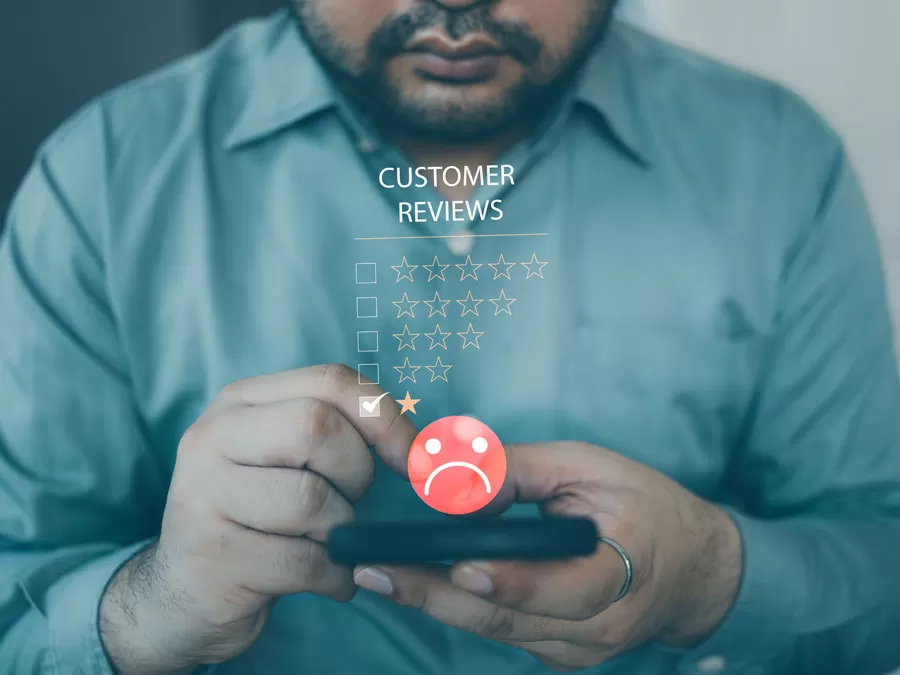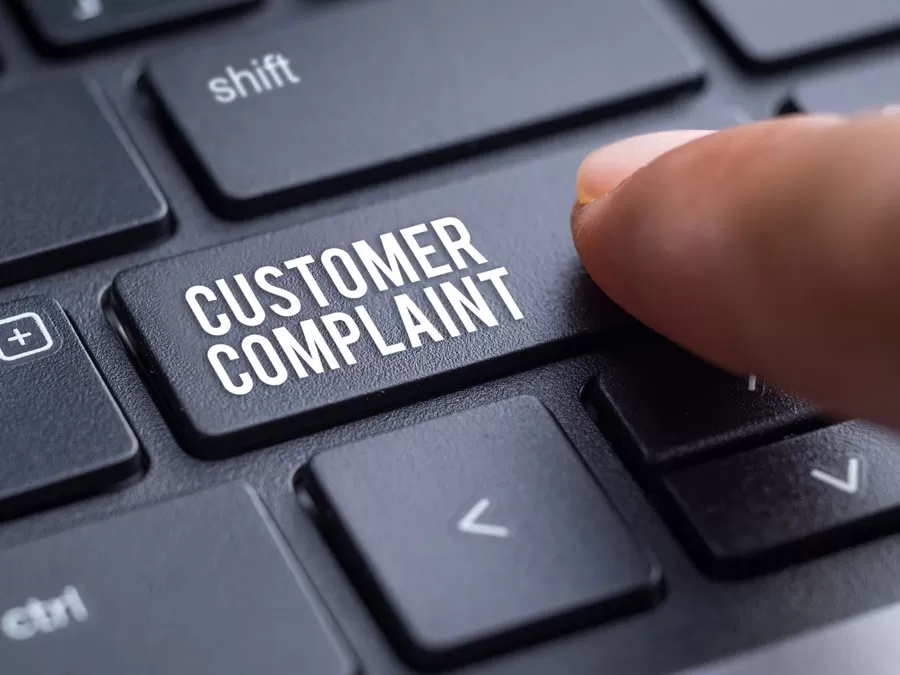Table Of Contents
- Understanding Your Customerss Needs
- Evaluating Your Current Customer Support Strategy
- Keeping Up with the Trends
- Factors Influencing the Frequency of Updates
- Signs It’s Time for an Update
- The Benefits of Regular Updates
- Strategies for Updating Your Customer Support
- Placing Customers at the Center
- Making it Part of Your Culture
- Ensuring Smooth Transitions and Change Management
- Measuring the Impact of Updates
- Contact Us
A customer service revolution is happening right before our very eyes, and call centers need to innovate fast.
Pinpointing what exactly is propelling the rapid changes in customer expectations can be tricky. Some believe it’s a result of the unstoppable growth of technology, which gives people plenty of options for connecting with brands.
Others, on the other hand, support the opposite idea—that consumers’ growing needs are the ones shaping new tech-based trends.
Both perspectives seem to be true. It seems there’s a complex interplay between customer expectations and technology, with both of them heavily influencing one another.
Call centers need to be at the forefront of this customer support revolution. In fact, this is probably the biggest challenge they’re facing right now. If, in the past, great customer service simply meant being friendly to customers over the phone, the landscape has now become more complicated.
Understanding Your Customers’ Needs
A customer support strategy that fails to cater to your customers’ evolving needs can quickly lead to dissatisfaction and attrition. To ensure your approach remains effective, it is essential to gain a deep understanding of your customers. Customer feedback, market research, and data analysis are invaluable tools to identify pain points and areas for improvement.
Listening to your customers’ feedback demonstrates your commitment to their satisfaction and provides valuable insights into their experiences. Customer feedback surveys, online reviews, and direct communication can highlight recurring issues or emerging trends that require addressing.
Evaluating Your Current Customer Support Strategy
customer support manager analyzing brand customer experience strategy for call center
Before deciding on the frequency of updates, a comprehensive evaluation of the effectiveness of your existing customer support strategy is essential. Key performance indicators (KPIs) such as response times, resolution rates, customer satisfaction scores, and customer retention metrics are vital benchmarks for assessment.
Here are the essential steps to evaluate and update your customer support strategy condensed into five key points:
-
Data Collection and Feedback
- Gather customer feedback and review support metrics.
- Identify pain points and areas needing improvement.
-
Team Performance and Training
- Assess support team performance and skill levels.
- Identify training needs and agent development opportunities.
-
Channel Effectiveness
- Evaluate communication channels’ efficiency and customer satisfaction.
- Consider omni-channel support and self-service options.
-
Policy and Procedure Review
- Analyze support policies for clarity and alignment with values.
- Update policies as needed to meet customer expectations.
-
Adaptation and Monitoring
- Develop an updated strategy based on evaluation findings.
- Implement changes, monitor impact, and iterate for continuous improvement.
Regularly analyzing these KPIs will reveal areas of strength and weaknesses in your customer support approach. Are your response times meeting customer expectations? Are customer satisfaction scores declining? Identifying these insights will guide you in determining where and how to update your strategy for optimal results.
Keeping Up with the Trends
The modern world demands so much from brands and their contact centers, but the core goal of customer support remains the same: to keep customers happy. The thing is, consumers’ definition of “happy” is constantly changing. Right now, customers want a frictionless experience from brands. They demand hassle-free and smooth transactions from the businesses that they choose to transact with and their customer support is no exception.
To keep up, brands now deploy a multichannel presence via the phone, email, social media, live chat, and other interaction platforms. The idea behind this is simple: By providing customers lots of options, they remain in control over when and how they connect with brands. This freedom does not only make customers happy, it also empowers them.
Although the principles behind the omnichannel call center strategy are straightforward and simple, getting there is a grueling process.
For instance, contact centers’ responsibilities are multiplying as they increase the number of touchpoints they handle. With every new platform comes new demands. Consumers want efficiency, speed, and responsiveness all at once. A brand’s dilemma is that it’s often hard to provide all these without falling short—even for just a tiny bit—of some of these standards.
It can be ideal that you outsource business solutions from a trusted firms. Multichannel call centers like Open Access BPO can provide hyper-customizable solutions for what your business needs or currently struggling with.
Factors Influencing the Frequency of Updates
The frequency of updating your customer support strategy depends on several factors. Keeping a close eye on industry trends, technology advancements, and customer expectations is crucial.
As the business landscape evolves, so do your customers’ preferences and needs. Staying current with the latest trends and technologies ensures that your customer support remains relevant and competitive.
Moreover, monitoring your competition can provide valuable insights into what works and what doesn’t. Are your competitors rolling out new customer support features or tools? Assessing their strategies can help you identify areas for improvement in your own approach.
The dynamic nature of customer support requires businesses to be agile and adaptable. Rather than sticking to rigid timelines, let the data and market conditions guide you in determining the optimal frequency of updates.
Signs It’s Time for an Update
In the fast-paced business landscape, staying attuned to the signals indicating the need for updating your customer support strategy is vital to maintaining a competitive edge. Certain indicators can serve as red flags, alerting you to potential gaps or inadequacies in your existing approach.
Here are some key signs that it’s time to take a closer look at your customer support strategy:
-
Decline in Customer Satisfaction Scores
Customer satisfaction is the heartbeat of any successful business. A noticeable decline in customer satisfaction scores can be a clear indication that your current customer support strategy may not be aligning with your customers’ expectations and needs.
Low satisfaction levels could lead to customer attrition, negative word-of-mouth, and damage to your brand reputation.
Regularly monitor customer satisfaction scores through feedback surveys, post-interaction ratings, and customer reviews. If you notice a downward trend, it’s a clear sign that it’s time to reevaluate and update your customer support approach.
-
Increase in Customer Complaints
An uptick in customer complaints can be a glaring sign that your customer support strategy is falling short of meeting your customers’ needs. Complaints may arise due to various issues, such as slow response times, unhelpful interactions, or difficulty in accessing support channels.
Ignoring a rising number of complaints could lead to customer dissatisfaction and hinder your ability to retain loyal customers.
Analyze the nature of the complaints and identify recurring themes to pinpoint areas that require improvement. A proactive approach to addressing customer concerns will help prevent potential escalations and showcase your commitment to excellent customer service.
-
High Customer Churn Rates
Customer retention is an essential aspect of sustaining business growth and success. If you notice a significant increase in customer churn rates, it’s a clear indication that your current customer support strategy is not meeting customer expectations.
High churn rates may stem from a lack of personalized support, unresolved issues, or inadequate communication with customers. Assess customer feedback and analyze the reasons behind customer departures to understand what aspects of your support strategy need enhancement.
-
Business Expansion and Evolution
As your business grows and evolves, your customer support strategy must evolve in tandem. Entering new markets, launching new products or services, or targeting different customer demographics can significantly impact the demands placed on your customer support team.
Adapting your customer support approach to cater to the unique needs of these changes is essential to ensure that your customers continue to receive excellent service. Consider how your current strategy can accommodate the expanding scope of your business and implement updates accordingly.
-
Shifting Customer Demographics and Expectations
Customer demographics and expectations are continually evolving, driven by technological advancements and changing market trends. Millennials and Gen Z, for example, prefer self-service options and quick resolutions through digital channels.
Regularly conduct market research to understand the shifting preferences and expectations of your target audience. Integrating insights from market research into your customer support strategy will demonstrate that you value your customers’ preferences and are willing to adapt to their changing needs.
The Benefits of Regular Updates
As a business owner, you might wonder why investing time and resources in updating your customer support strategy is crucial. Let’s explore the multitude of benefits that regular updates can bring to your business and, more importantly, to your customers:
-
Enhanced Customer Satisfaction
Customer satisfaction lies at the heart of any successful business. By regularly updating your customer support strategy, you demonstrate a commitment to meeting your customers’ evolving needs.
The ability to adapt and address customer pain points ensures that each interaction leaves a positive impression. Satisfied customers are more likely to become brand advocates, driving word-of-mouth referrals and contributing to your business’s growth.
-
Improved Customer Retention
A customer support strategy that evolves to meet customer expectations fosters a sense of trust and loyalty. When customers feel heard, valued, and supported, they are more likely to remain loyal to your brand.
Customer retention is not only more cost-effective than acquiring new customers but also plays a crucial role in maximizing customer lifetime value. Regular updates to your support strategy strengthen customer relationships and reduce the likelihood of churn.
-
Strengthened Brand Reputation
Your customer support strategy is a direct reflection of your brand’s values and commitment to customer excellence. By updating and enhancing your support approach, you create a positive brand image that resonates with your target audience.
Customers perceive a business that prioritizes their needs and invests in delivering exceptional support as trustworthy and reliable. A strong brand reputation enhances your competitive advantage and attracts new customers.
-
Fostering Customer Loyalty
Customers today have abundant choices, and loyalty can be hard to come by. A customer support strategy that continuously evolves to exceed expectations fosters a strong emotional connection with your customers.
When customers feel valued and cared for, they are more likely to choose your brand over competitors, even in a crowded market. Building customer loyalty is a long-term investment that pays dividends in sustained customer relationships and repeat business.
-
Positioning as an Industry Leader
Staying ahead of industry trends and technology advancements is key to remaining competitive in a dynamic marketplace. Regular updates to your customer support strategy allow you to integrate the latest tools and solutions.By offering cutting-edge support capabilities, you position your business as an industry leader and innovator. Customers gravitate towards businesses that demonstrate a commitment to staying at the forefront of their field.
-
Streamlined Support Processes and Boosted Efficiency
As your business grows, so does the volume of customer inquiries and support tickets. Regular updates to your support strategy help you optimize and streamline support processes.
-
Creating a Seamless Customer Journey
A well-structured and updated customer support strategy ensures a seamless customer journey across all touchpoints. Whether a customer contacts you through phone, email, live chat, or social media, they should receive consistent and high-quality support.
A cohesive customer journey builds trust and confidence in your brand, encouraging customers to engage with your business more frequently.
-
Demonstrating Customer-Centricity
Customers appreciate businesses that actively listen to their feedback and take action to improve their experiences. By updating your customer support strategy based on customer feedback and data insights, you demonstrate a customer-centric approach.
Customers feel valued and heard, knowing that their opinions are taken into consideration when shaping your support strategy.
Strategies for Updating Your Customer Support
To keep your customer support strategy fresh and relevant, consider incorporating the following strategies:
-
Implementing Multichannel Support
Offer your customers multiple channels to reach you, including email, phone, live chat, and social media. Multichannel support ensures that customers can contact you using their preferred method, enhancing their overall experience.
-
Training and Upskilling Customer Support Team
Invest in continuous training and upskilling for your customer support team. Strengthening their communication and problem-solving skills equips them to handle customer inquiries effectively and efficiently.
-
Cultivating a Customer-Centric Culture
Foster a culture within your organization that places the customer at the center of every decision. Encourage all team members to prioritize customer needs and feedback in their daily operations.
Setting a Timeline for Updates
Deciding on the appropriate timeline for updating your customer support strategy requires careful consideration. Short-term updates may involve minor tweaks and adjustments based on immediate feedback or industry trends. Long-term updates may involve more significant changes, such as adopting new technology or overhauling support processes.
The frequency of monitoring and evaluation will depend on your business’s growth and the rate of change in your industry. Consider conducting regular customer satisfaction surveys, analyzing customer feedback, and holding periodic strategy review meetings to gauge the effectiveness of your support approach.
Involvement of Relevant Stakeholders
Updating your customer support strategy should be a collaborative effort involving various stakeholders. Engage your customer support team, front-line staff, and key decision-makers in the process. Their insights and expertise can offer valuable perspectives on pain points and opportunities for improvement.
Ensure clear communication and alignment with your broader business goals and objectives. By involving relevant stakeholders, you create a sense of ownership and responsibility for the success of the updated customer support strategy.
Placing Customers at the Center
In the end, it all boils down to what the customer wants the most. The best customer service strategy is one that spotlights customers’ happiness while treating technology as a means to that goal.
Unfortunately, however, plenty of managers have it the other way around. They get carried away by technology and thus mistakenly think that it should be the focus of their strategies.
The secret of customer-centric companies is that they place people at the center of it all. They take the time to ask customers what they really want and then use these responses to build a customer care model.
All this, however, won’t be possible if your organization’s resources aren’t aligned with your goal. You can build the right internal framework by:
- connecting departments for easier collaboration;
- hiring the best talents;
- getting everyone involved; and
- acquiring the right tools.
Making it Part of Your Culture
The best way to make these updates sustainable is to make each one of them a part of your organizational culture. As the customer service landscape changes fast and new tech trends form, every brand needs a consistent approach when it comes to updating their services. Therefore, your entire organization must learn to watch out for your customers’ needs. You also need to stay abreast of the latest industry developments to gain fresh ideas for improving your services.
While there’s no formula for how often you need to re-strategize, you do need to adopt a growth mindset. This lets you regularly work on pain points and inefficient processes that slow down your customer support. Major upgrades, on the other hand, naturally take time. Examples of this are:
- adding a new call center channel;
- revising quality monitoring processes;
- updating your transaction handling protocols; and
- resizing your workforce.
Ensuring Smooth Transitions and Change Management
Effective change management is critical to the successful implementation of updates to your customer support strategy. Transparent communication with your customers is essential during times of change.
Inform them of any upcoming updates, new support channels, or changes to existing processes. Manage expectations to ensure a seamless transition and avoid any disruptions to the customer journey.
Training and preparing your customer support team for the updates is equally important. Provide comprehensive training on new tools, processes, and communication protocols. Address any concerns or challenges that may arise during the transition, and offer ongoing support to ease the adjustment period.
Measuring the Impact of Updates
After implementing the updated customer support strategy, measuring its impact is vital to understanding its effectiveness. Establish new KPIs and metrics that align with the goals of the updated strategy. Monitor customer satisfaction scores, response times, resolution rates, and customer retention metrics to gauge the success of the changes.
Gathering customer feedback through surveys and customer interviews can provide valuable insights into their perception of the updated support experience. Use data analysis to track trends and identify areas that may require further improvement.
By understanding your customers’ needs, regularly evaluating your current strategy, and adapting to market trends and technology advancements, you position your business for success.
Recognize the signs that it’s time for an update, and embrace change as an opportunity for growth and improvement. Regularly updating your customer support strategy brings numerous benefits, including enhanced customer satisfaction, increased customer retention, and a strengthened brand reputation.
Incorporate various strategies, such as multichannel support, self-service options, and AI automation, to improve the efficiency and effectiveness of your customer support. Cultivate a customer-centric culture within your organization, involving all stakeholders in the process of updating your strategy.
Remember to set a timeline for updates that aligns with your business’s growth and industry dynamics. Engage in effective change management, communicating updates to your customers, and providing adequate training and support to your customer support team.
Measure the impact of updates through relevant KPIs and customer feedback, and learn from successful case studies to fine-tune your approach.
Regardless of how often or how seldom you modify your customer care approach, keep in mind that every revision you make must reflect your customers’ needs. This is a foolproof way to enhance the customer experience and encourage more people to stick to your brand.
With the right strategies coupled with exceptional customer care from Open Access BPO, you can make your brand stand out from the rest, making sure your customers stick to your brand throughout their journey. Contact us today for business solutions tailored to your brand s needs.


















